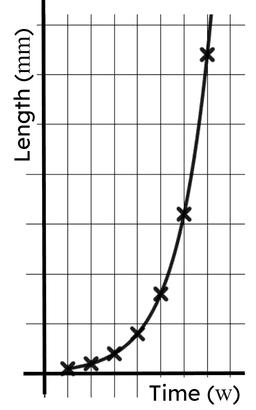Myths about teaching can hold you back


- Year 9
Representing geometric sequences graphically
I can represent geometric sequences graphically and appreciate the common structure.


- Year 9
Representing geometric sequences graphically
I can represent geometric sequences graphically and appreciate the common structure.
These resources were made for remote use during the pandemic, not classroom teaching.
Switch to our new teaching resources now - designed by teachers and leading subject experts, and tested in classrooms.
Lesson details
Key learning points
- A geometric sequence looks like a curve when sketched (common ratio > 1 or < 1).
- The gradient increases sharply (common ratio > 1 or < 1).
- Although the graph is continuous, the sequence is not.
- Each geometric sequence is made up of discrete terms.
Keywords
Geometric sequence - A geometric sequence is a sequence with a constant multiplicative relationship between successive terms.
Common ratio - A common ratio is a key feature of a geometric sequence. The constant multiplier between successive terms is called the common ratio.
Common misconception
Pupils may thing that given the graph is continuous, the sequence can contain all of the values represented by the line.
It is important that pupils know when it is appropriate to draw a line to graph sequences and whether values on the line have any meaning. Sequences are often given as a list of terms and without context we cannot assume the sequence is continuous.
To help you plan your year 9 maths lesson on: Representing geometric sequences graphically, download all teaching resources for free and adapt to suit your pupils' needs...
To help you plan your year 9 maths lesson on: Representing geometric sequences graphically, download all teaching resources for free and adapt to suit your pupils' needs.
The starter quiz will activate and check your pupils' prior knowledge, with versions available both with and without answers in PDF format.
We use learning cycles to break down learning into key concepts or ideas linked to the learning outcome. Each learning cycle features explanations with checks for understanding and practice tasks with feedback. All of this is found in our slide decks, ready for you to download and edit. The practice tasks are also available as printable worksheets and some lessons have additional materials with extra material you might need for teaching the lesson.
The assessment exit quiz will test your pupils' understanding of the key learning points.
Our video is a tool for planning, showing how other teachers might teach the lesson, offering helpful tips, modelled explanations and inspiration for your own delivery in the classroom. Plus, you can set it as homework or revision for pupils and keep their learning on track by sharing an online pupil version of this lesson.
Explore more key stage 3 maths lessons from the Non-linear relationships unit, dive into the full secondary maths curriculum, or learn more about lesson planning.

Equipment
Licence
Prior knowledge starter quiz
6 Questions
Q1.Which type of sequence is represented by this graph?
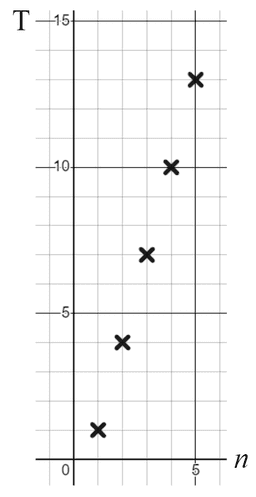
Q2.How can you tell that the sequence 17, 24, 31, 38, 45, ... is arithmetic?
Q3.How can you tell that the sequence 0.02, 0.2, 2, 20, 200, ... is geometric?
Q4.Sofia plots the graph of this arithmetic sequence. Which of these coordinates should Sofia plot?

Q5.Which of these will be one of the first five terms in the geometric sequence that has a first term of 1.25 and a common ratio of 2?
Q6.The missing $$2^{\text{nd}}$$ term of this geometric sequence is .

Assessment exit quiz
6 Questions
Q1.This graph of $$n$$ (term number) against $$T$$ (term value) could represent which of these types of sequences?
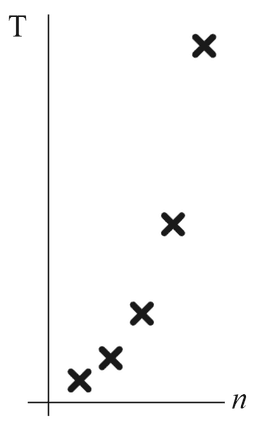
Q2.Jacob plots the graph of this geometric sequence. Which coordinates should Jacob plot?

Q3.How do you know that this graph might represent a geometric sequence?
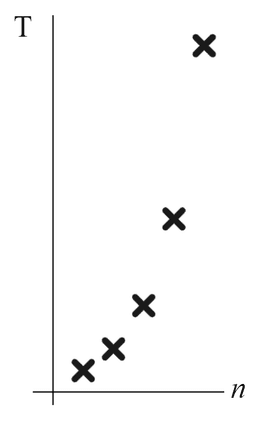
Q4.What do you know about the common ratio of this geometric sequence?

Q5.Which of the below could be the ratio of this geometric sequence?
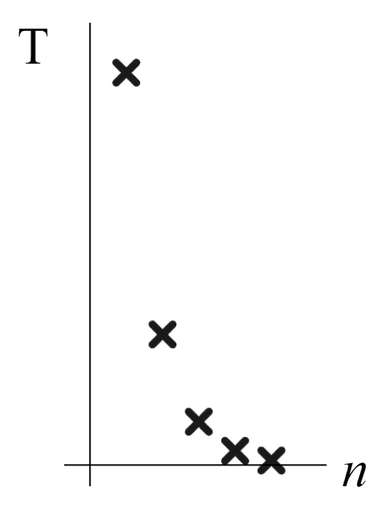
Q6.You can draw a line through the points of this geometric sequence because it is modelling data that is ...
